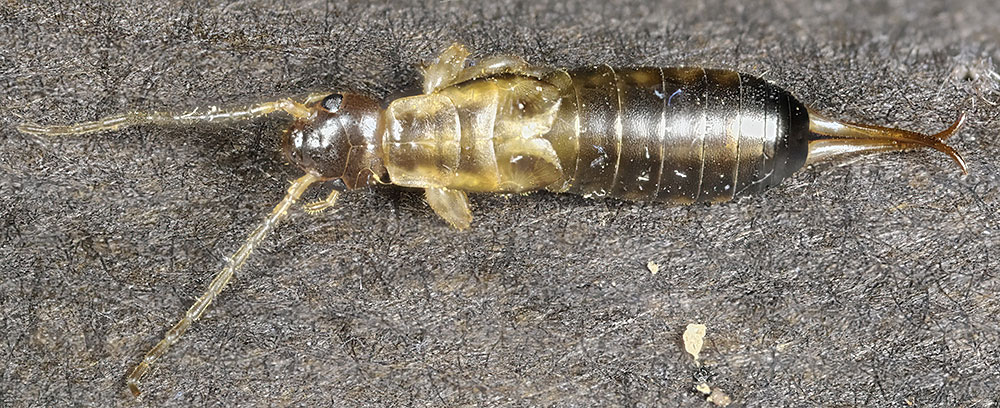
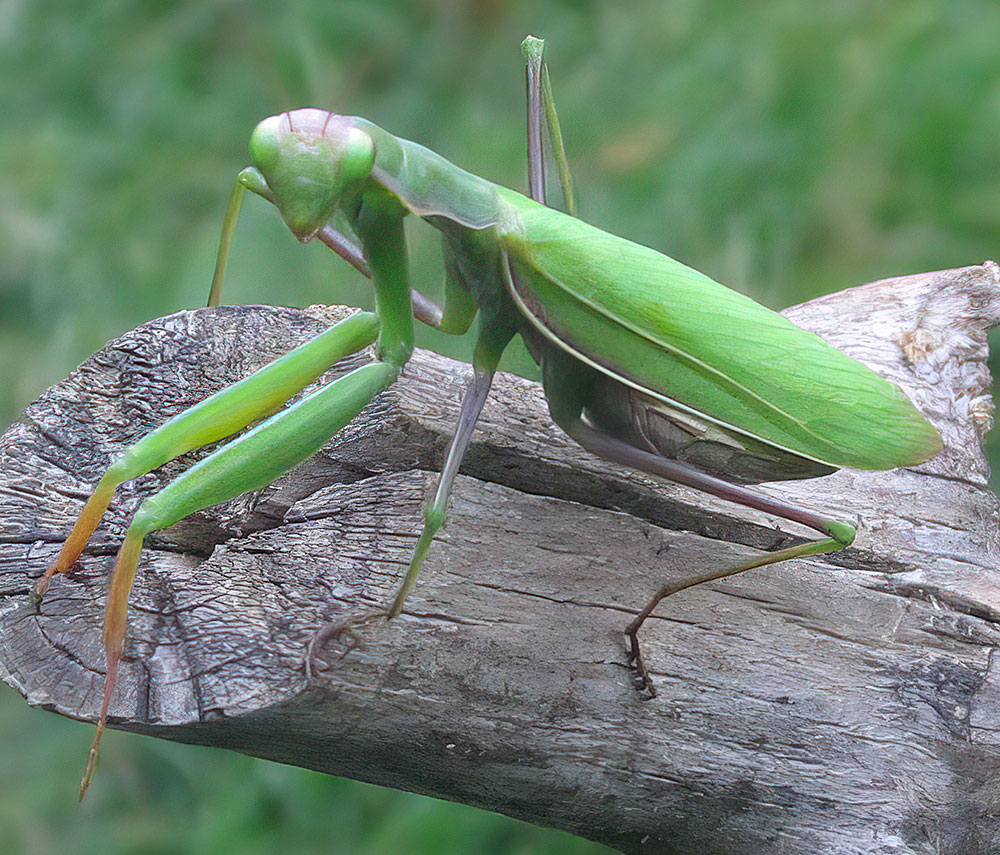

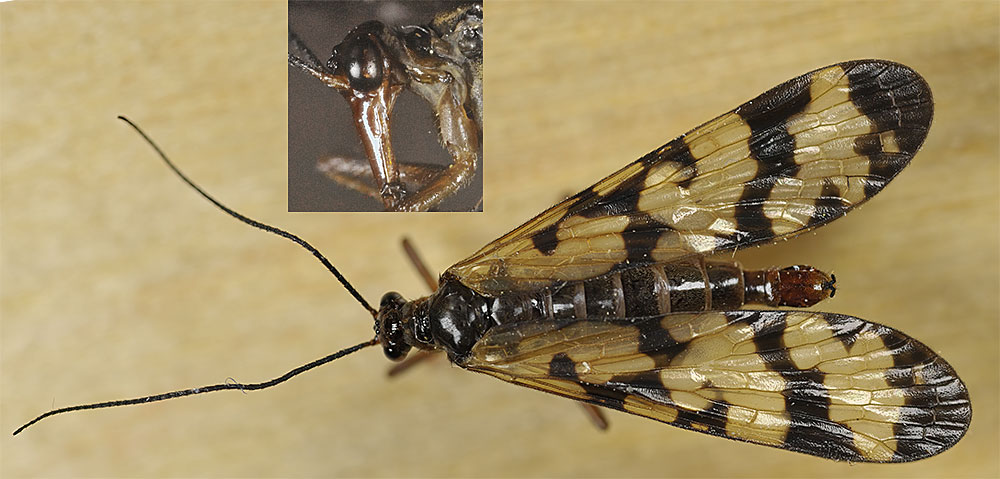
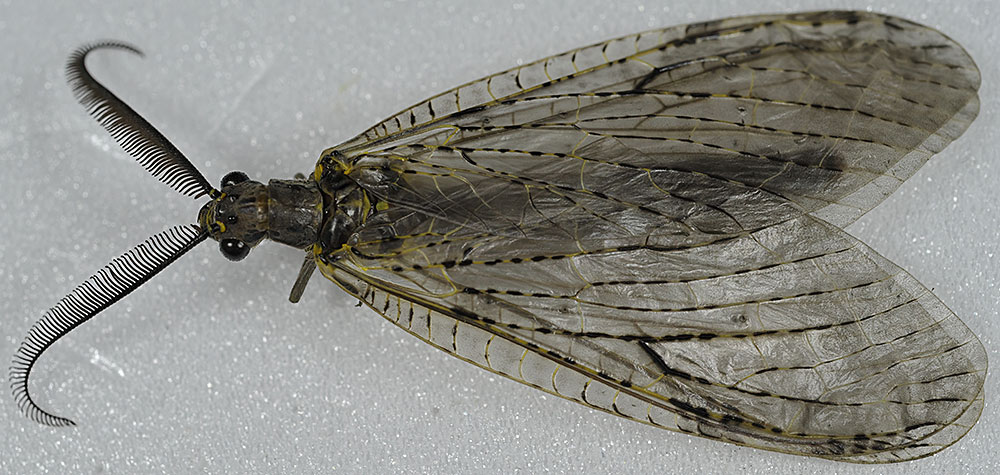
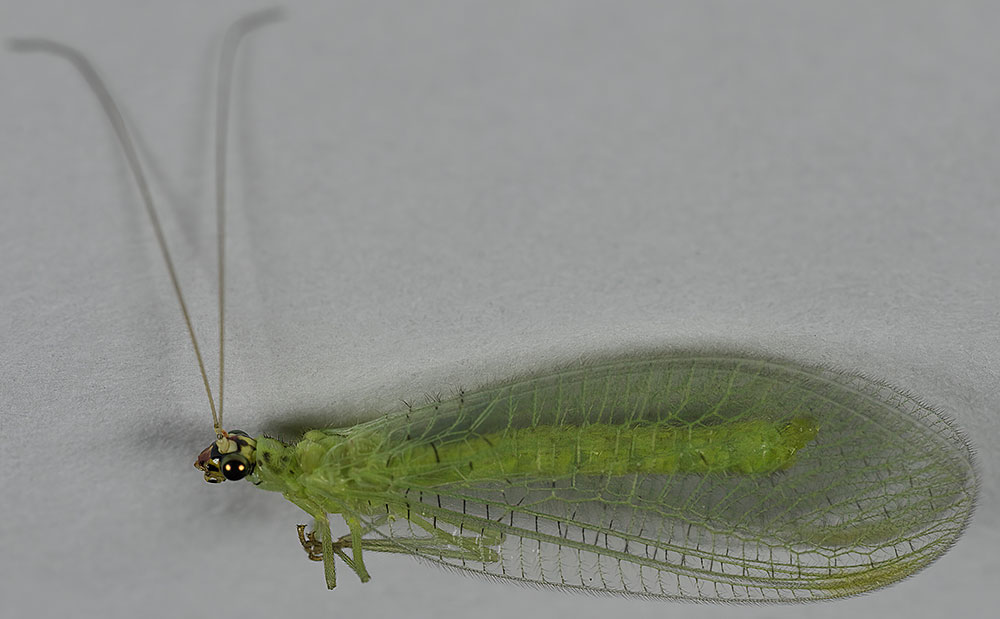

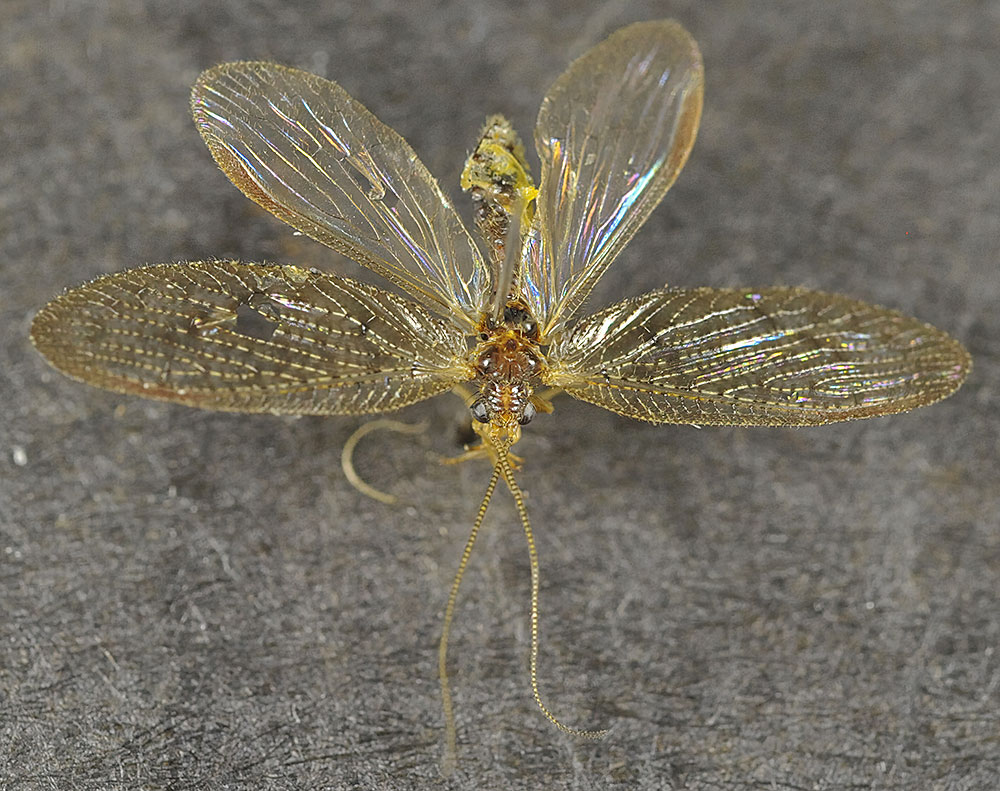

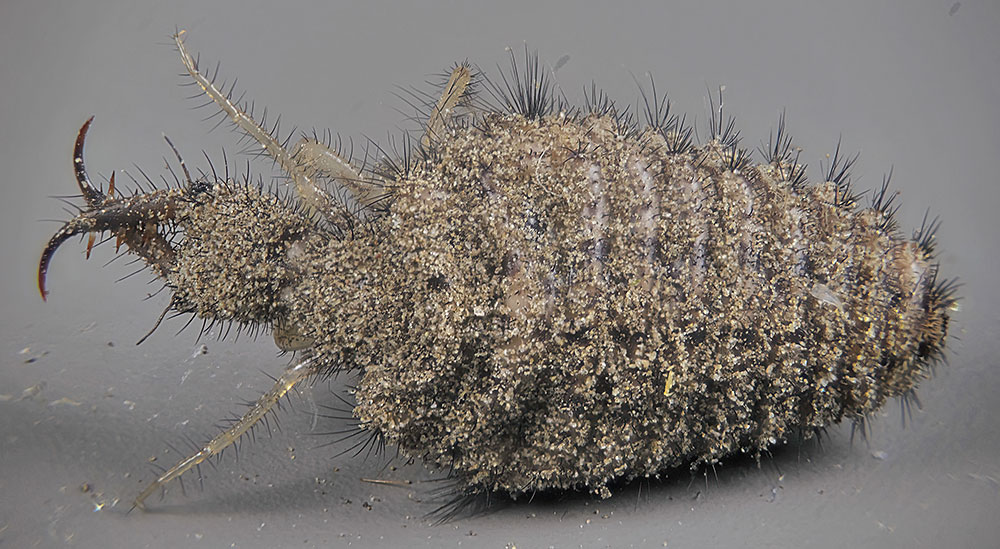

A Guide to the Adult Damselflies & Dragonflies of the Ottawa District
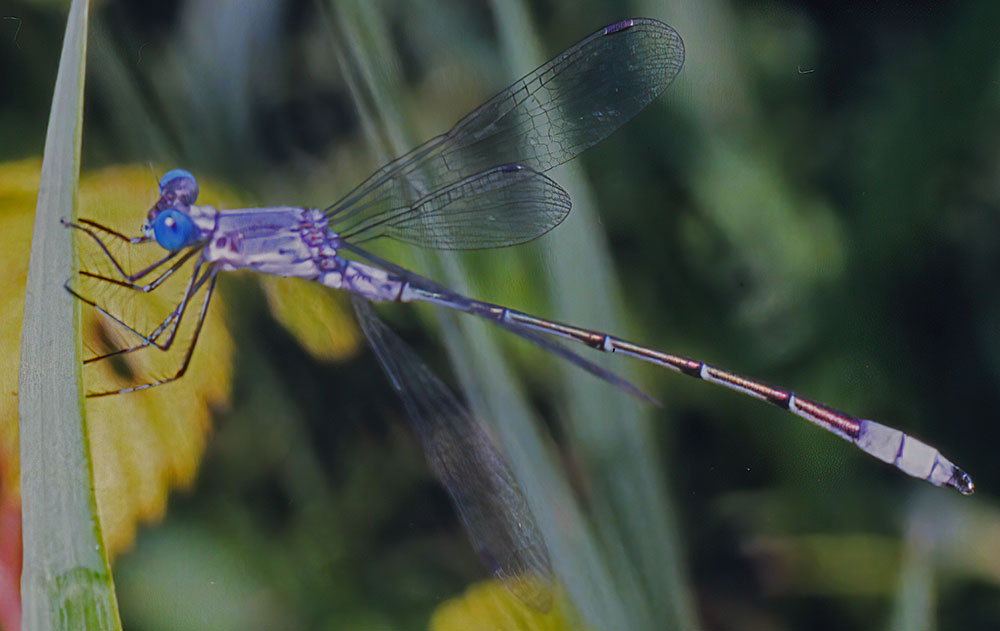

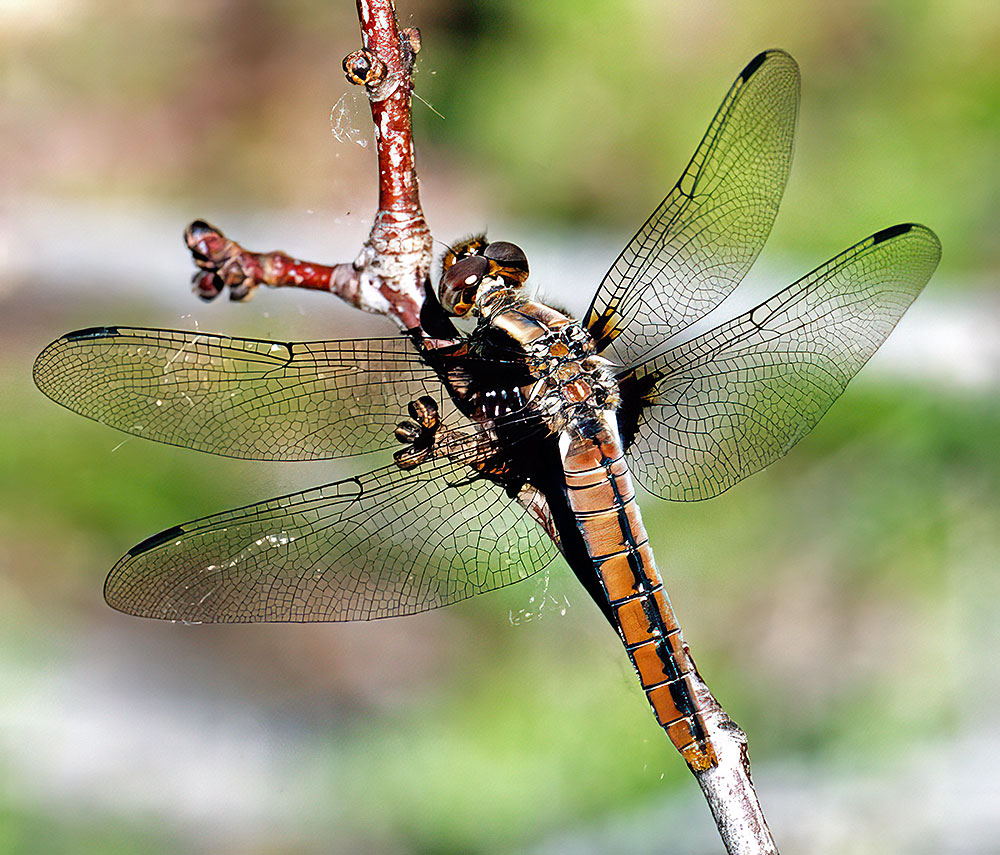

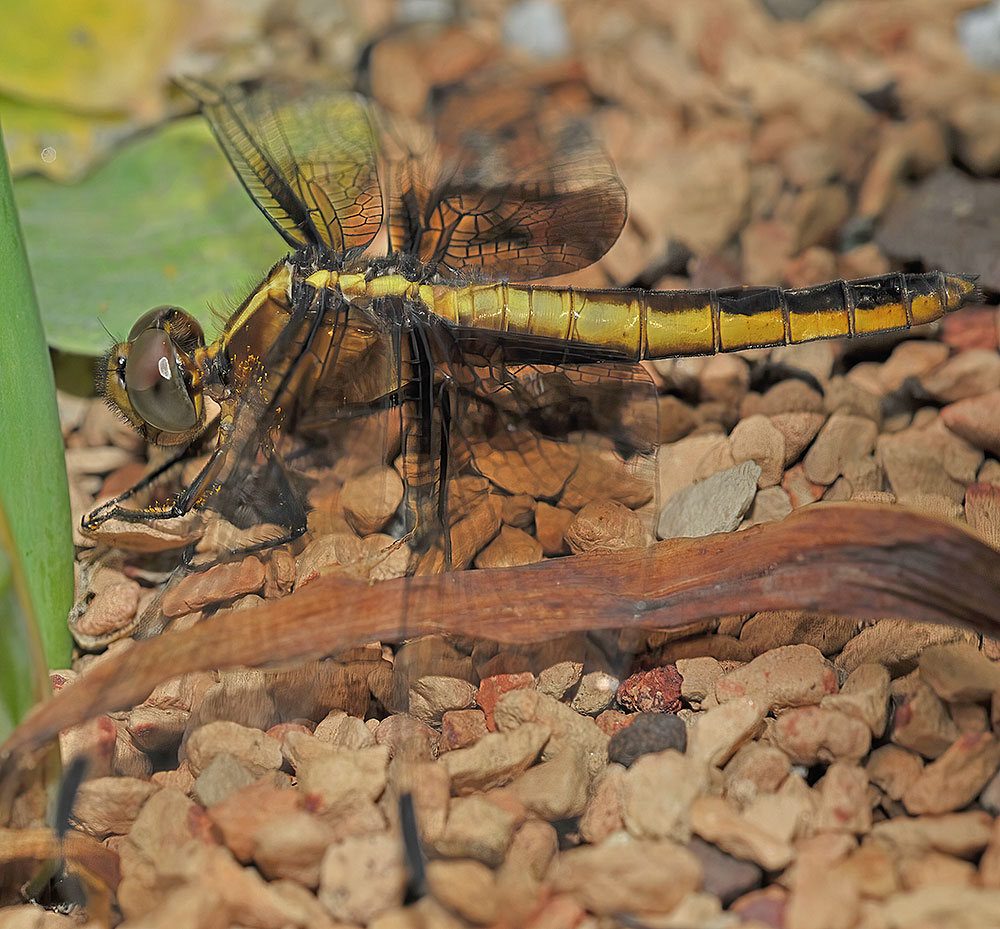

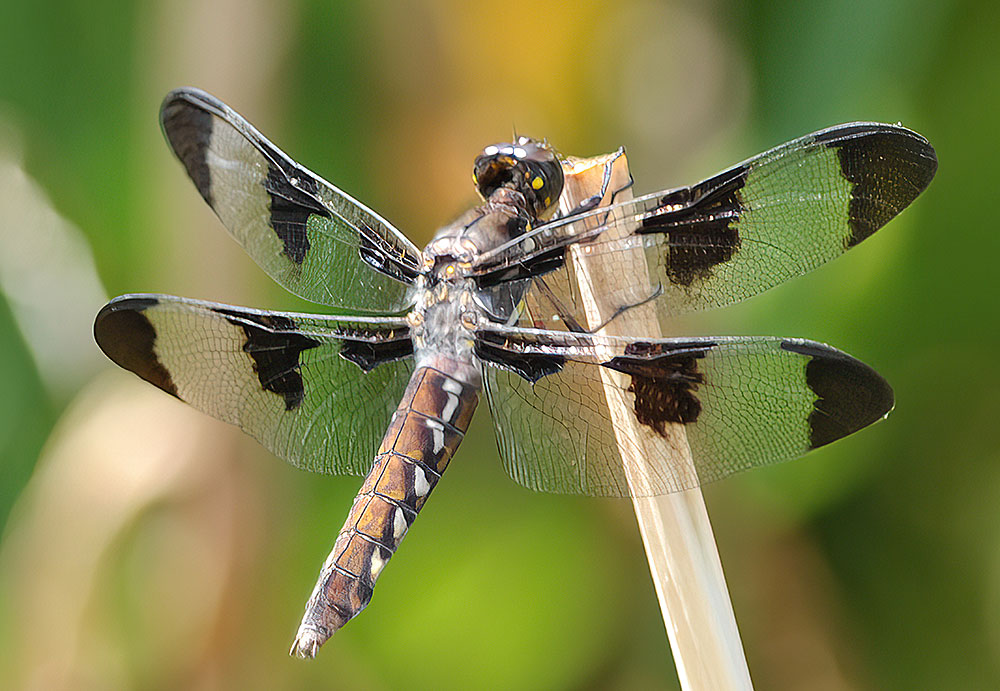

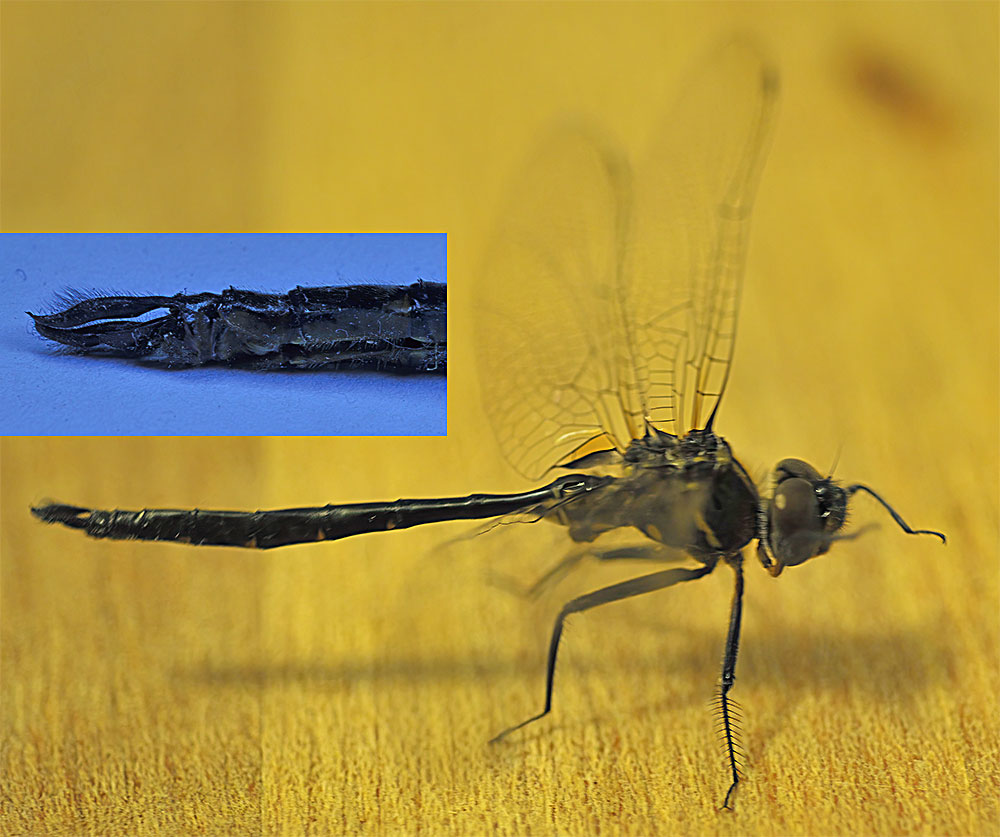

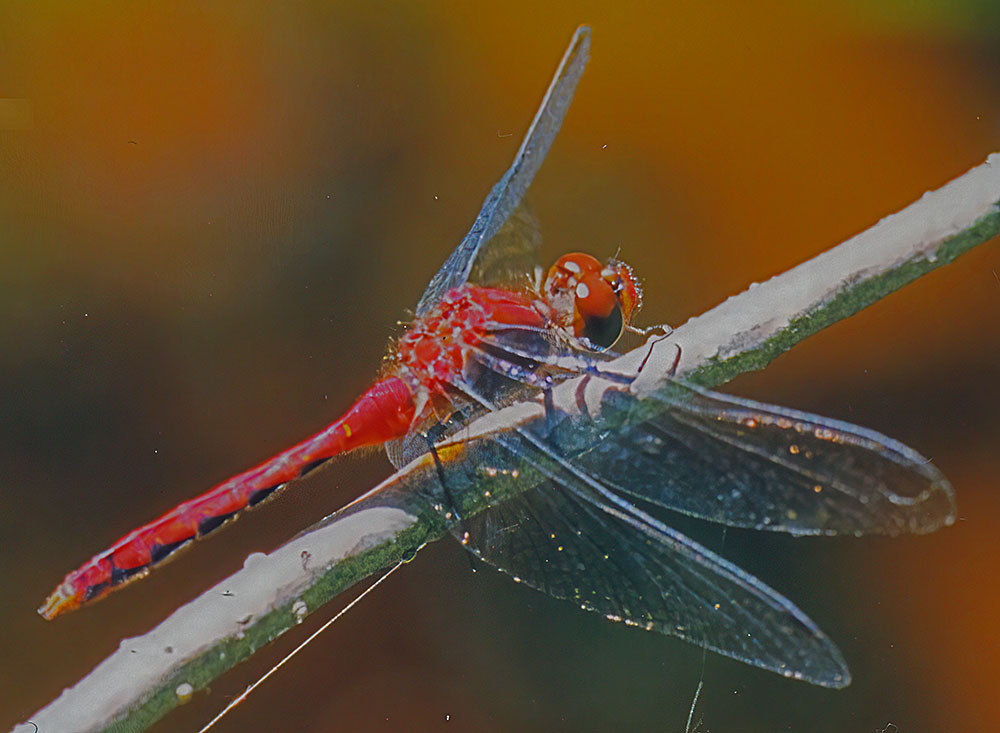

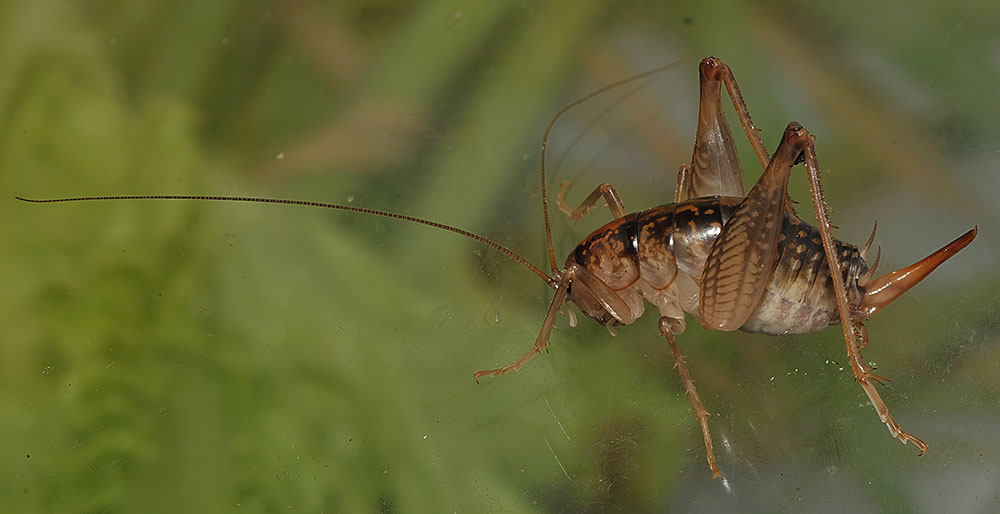

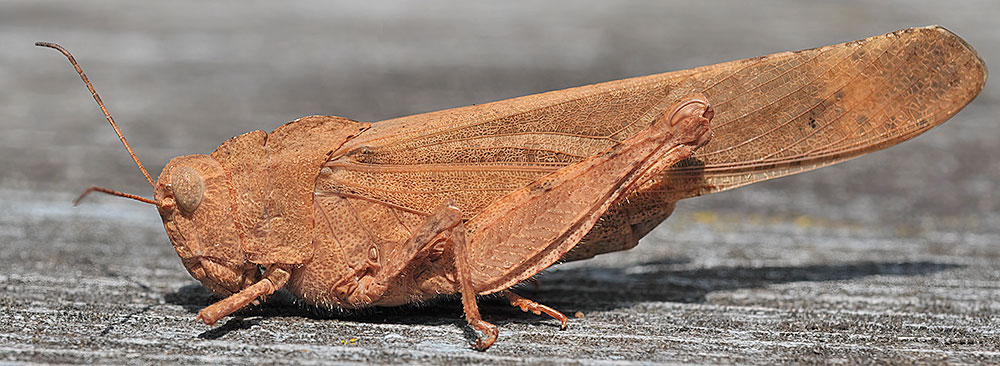
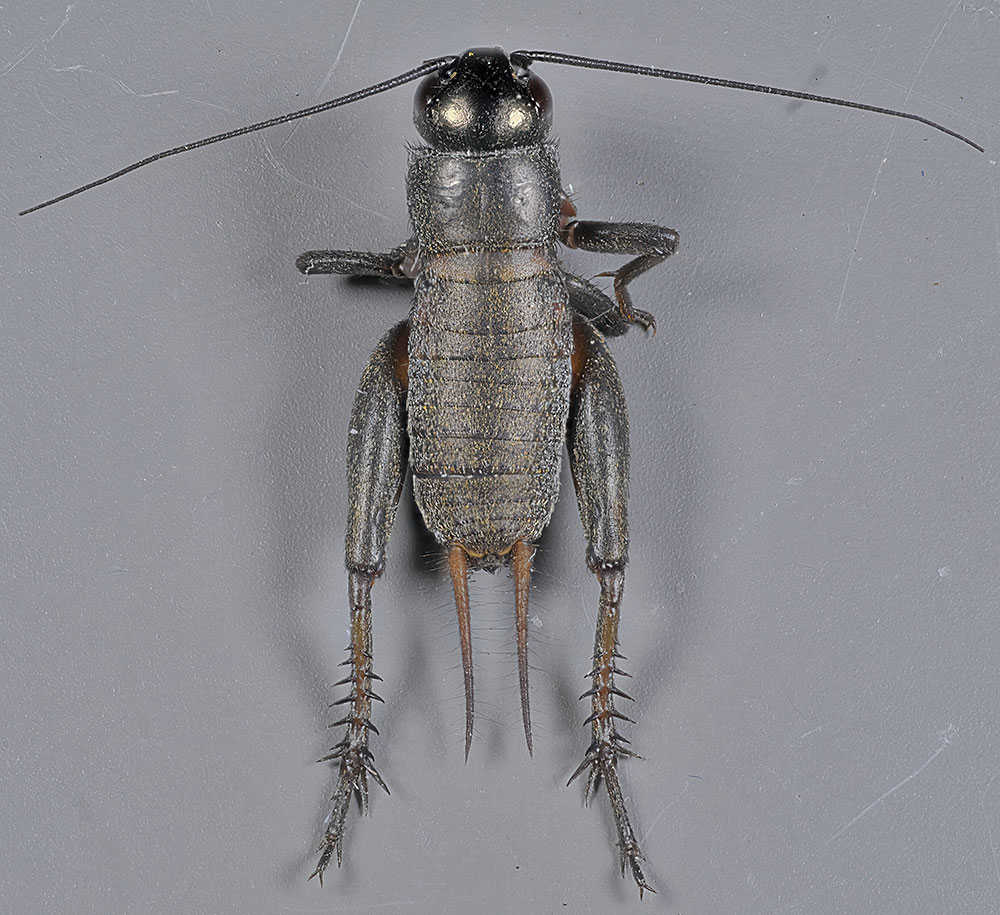

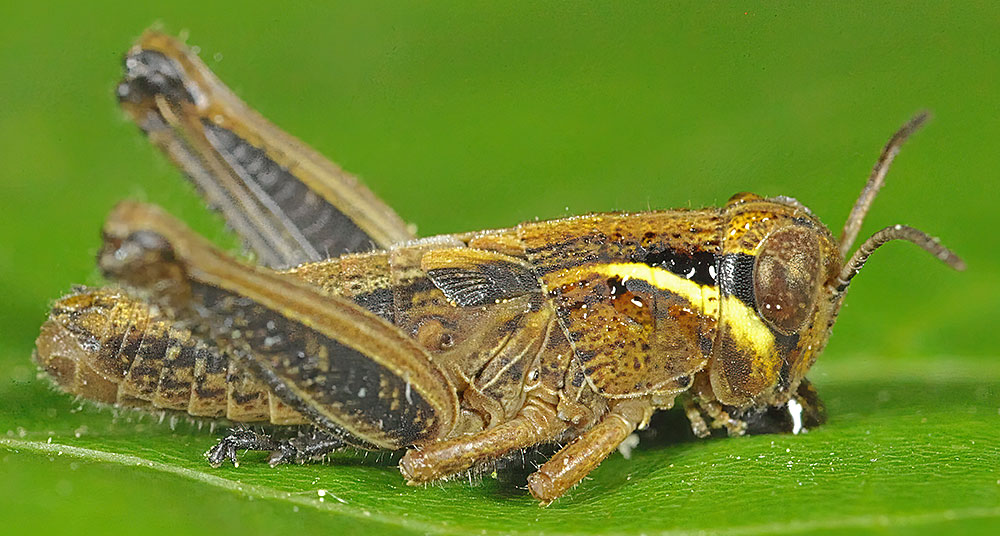

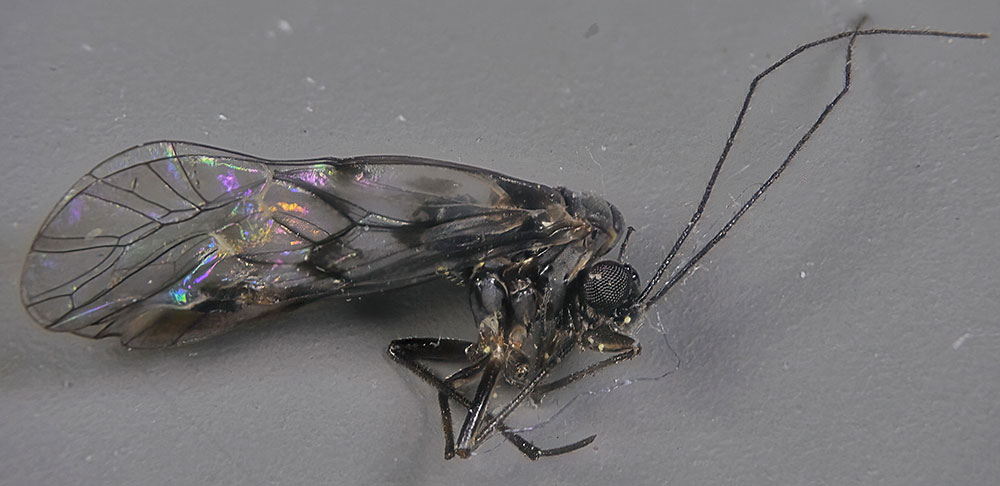
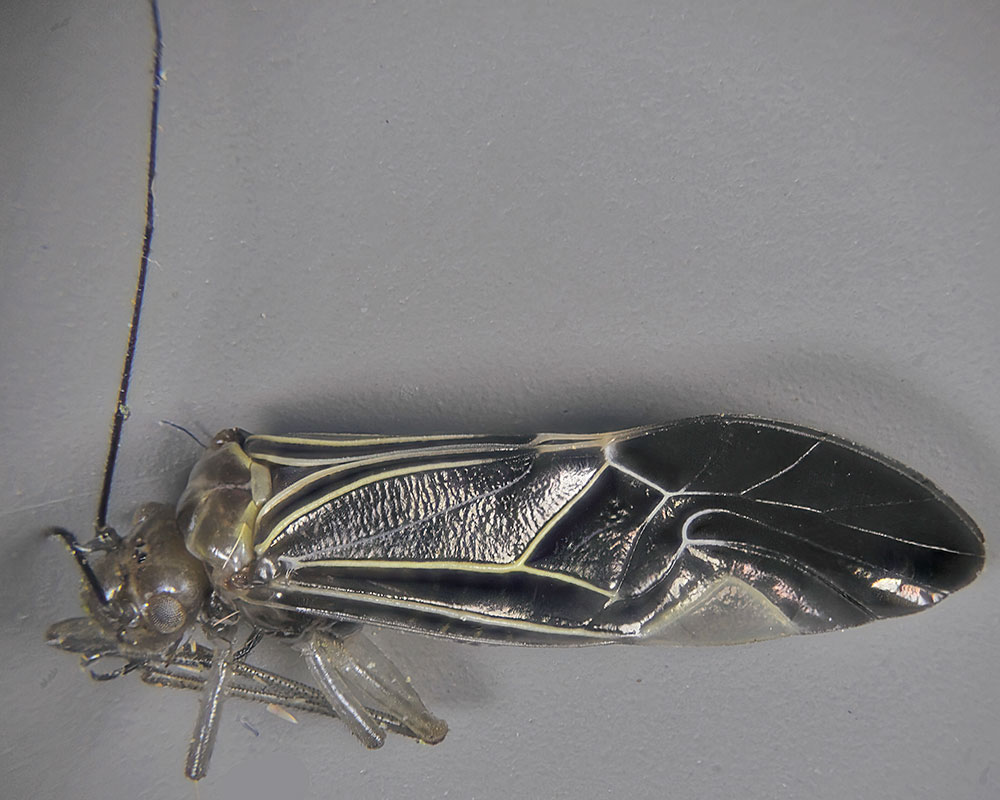

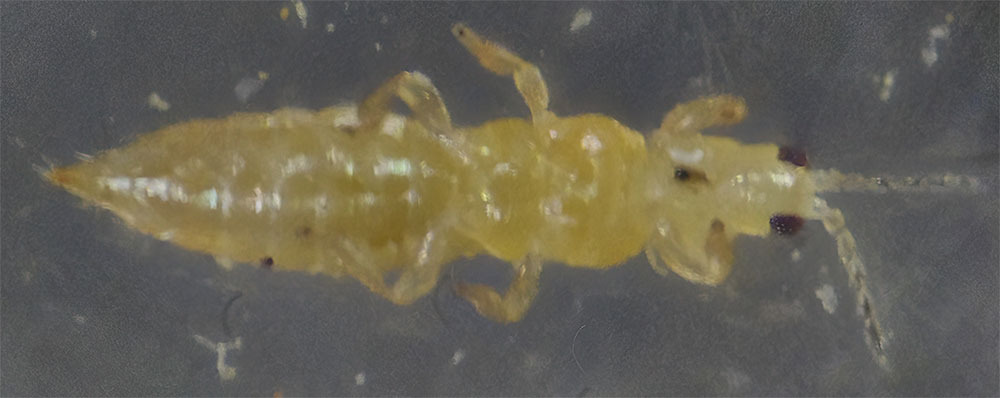
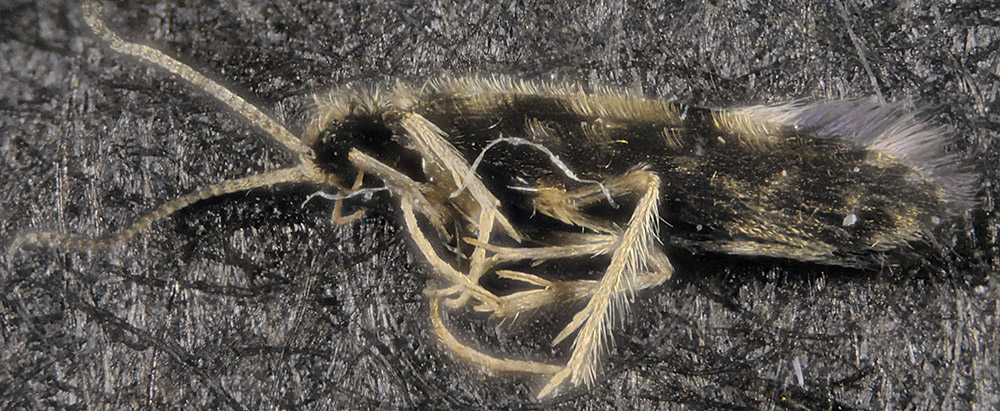
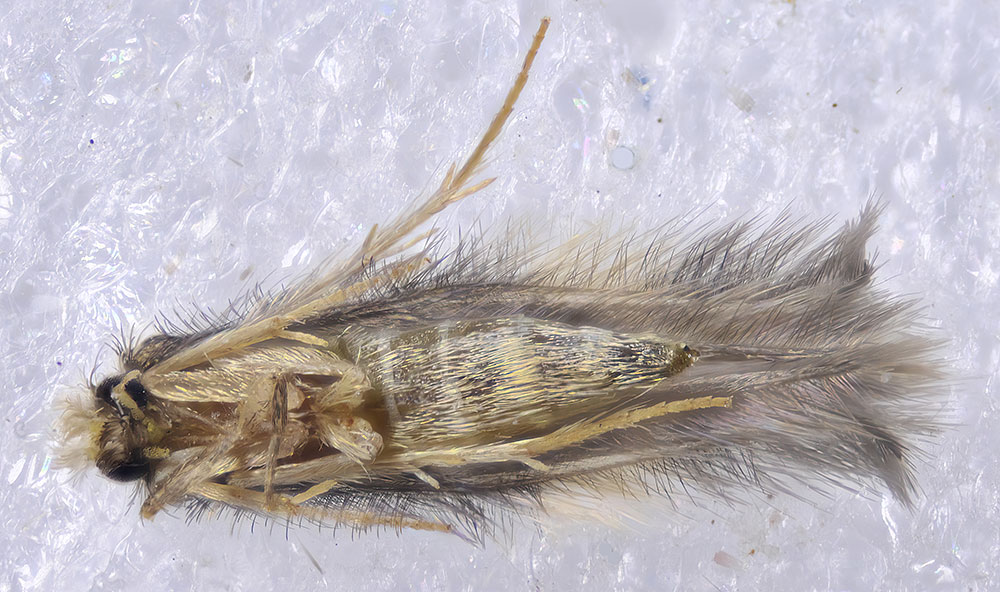

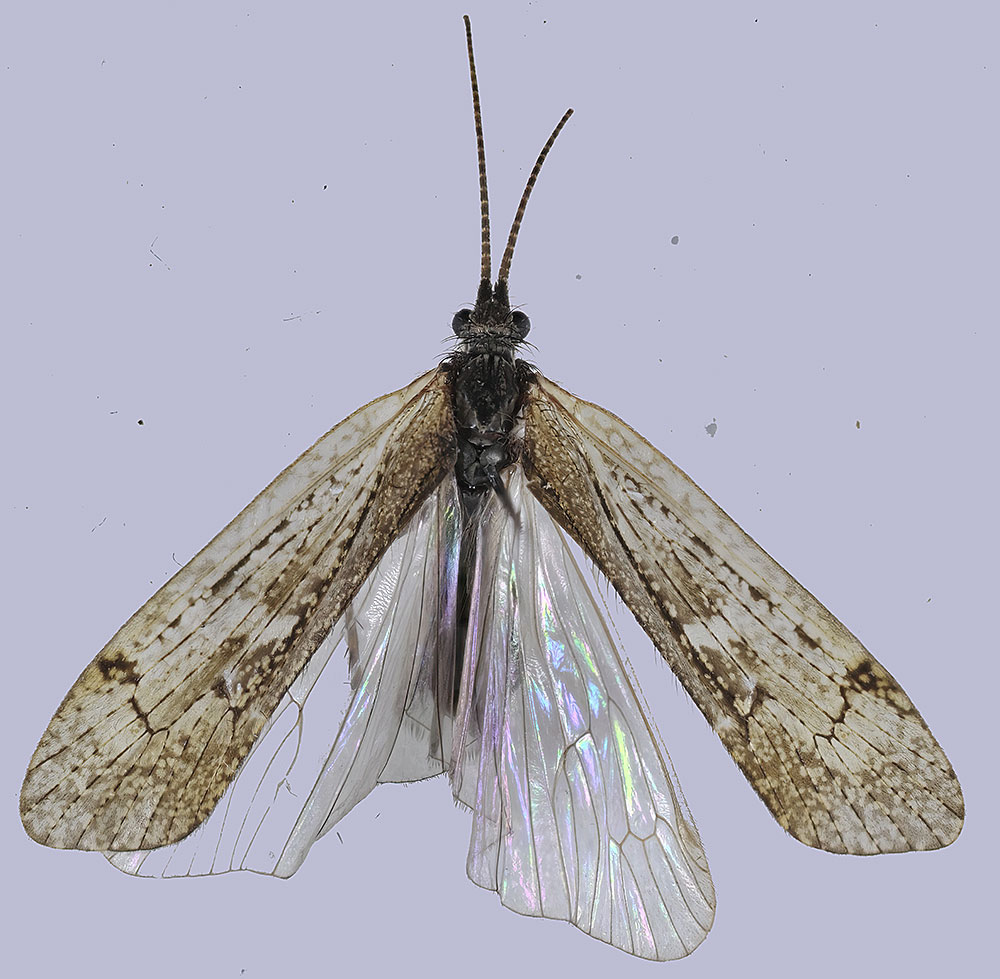

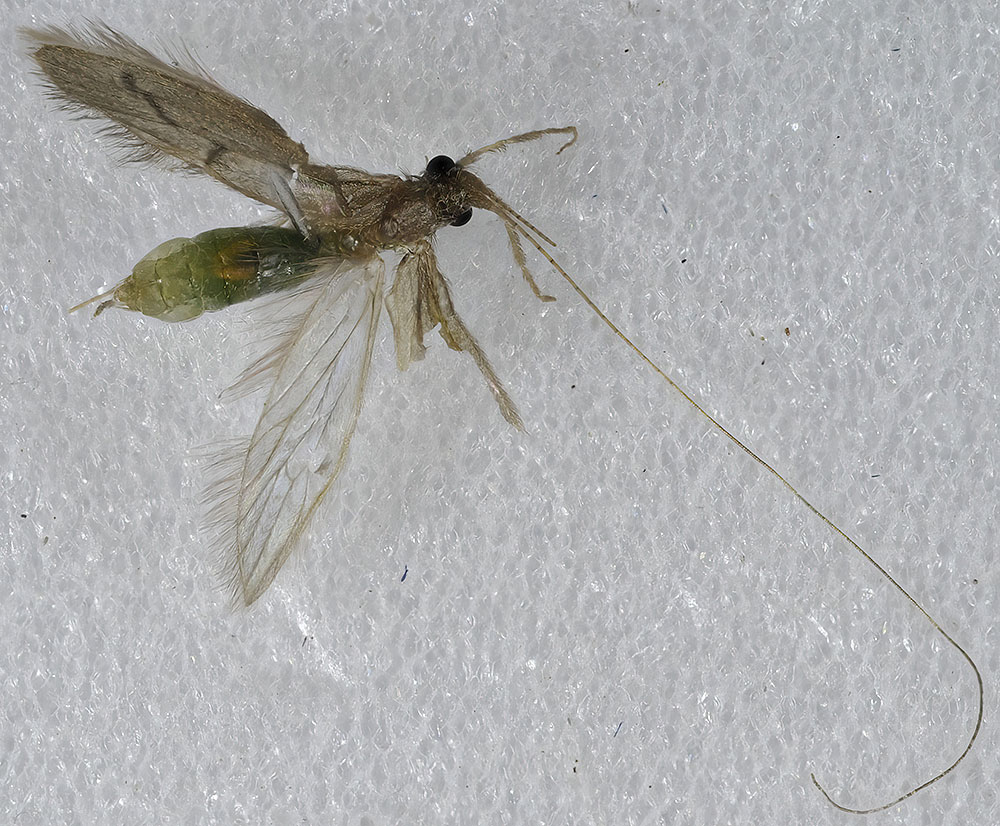

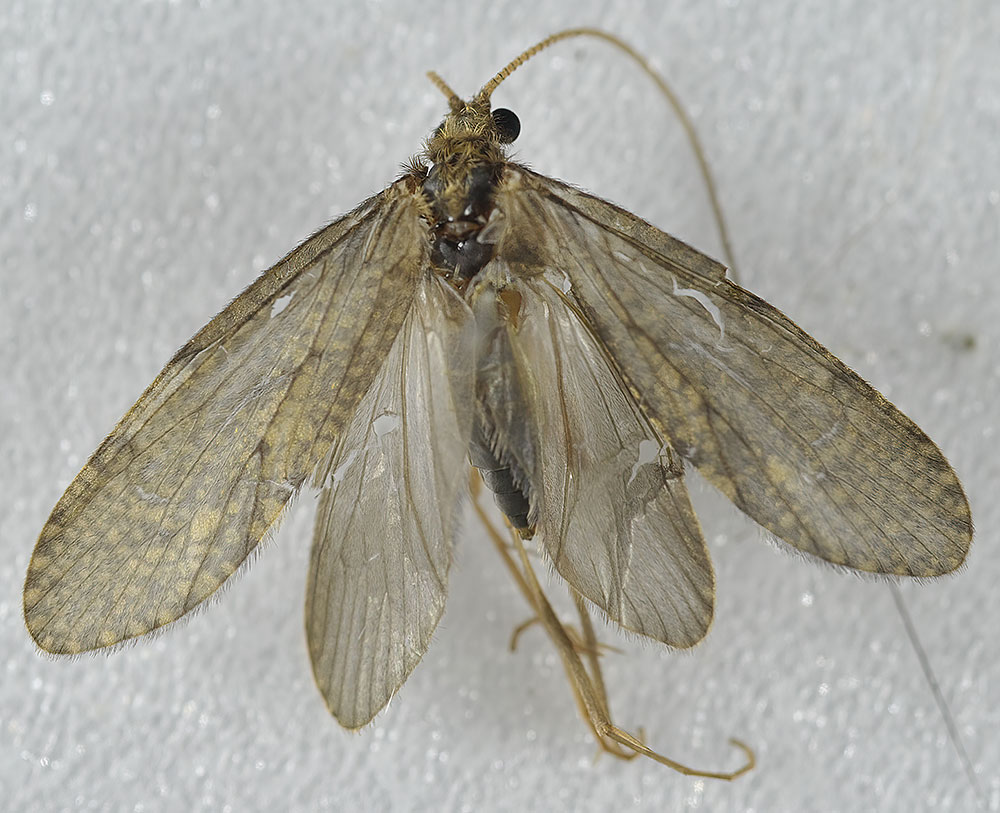

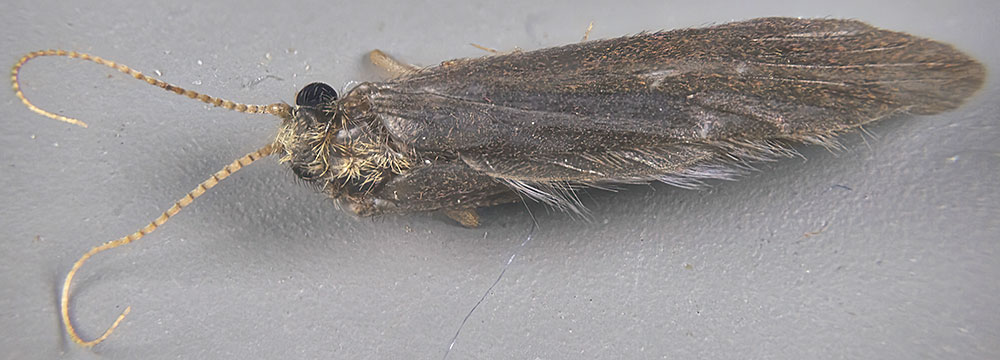
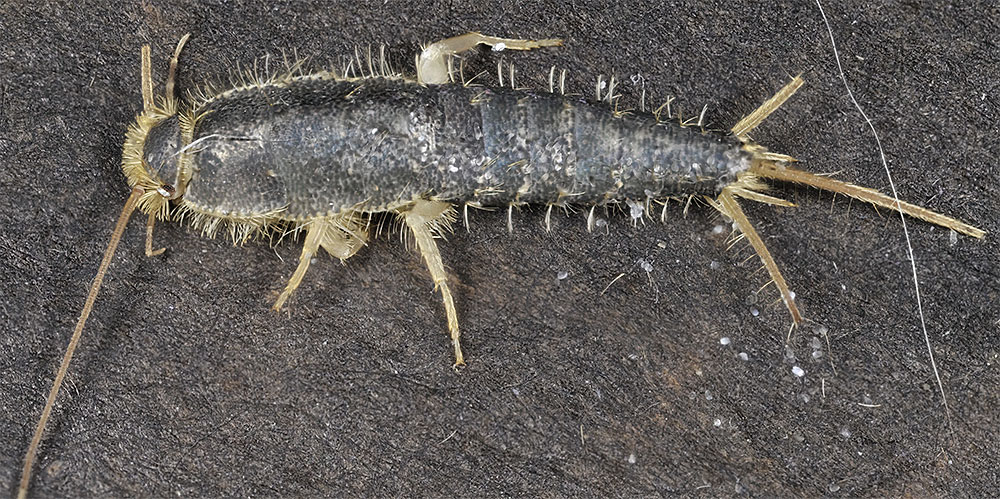

My 80 m2 is better than some in that it's a permaculture garden, which attracts ground nesting insects and pollinators. And, it's only 200 m from the edge of a 70 ha abandoned farm covered with grasses and shrubs and with lots of wet places in spring, although that 200 m is solid houses and asphalt. However I'm surrounded by street lights that reduce my ability to attract nocturnal insects to my own lights.
|
So far I haven't found any special equipment to be successful, I'm mostly just keeping a sharp
eye out with a net throughout the garden and at the porch light. I tried a small Berlese funnel,
but only got
nematode worms; it seems that small funnels dry the arthropods out before they can move. The ground
insects I did obtain were caught by dumping a soil sample onto a patio stone and picking up
anything that moved with an aspirator.
I never succeeded in attracting anything other than ants to any of the recommended fermented sugar
lures for Lepidoptera. I chill specimens in the frig for photographing, identifying and subsequent
release when possible, and use a freezer for those that must be collected to identify them.
My photographic collection started with those I took during the first 6 years here while building my gardens, mostly with a point&shoot camera. The project to photograph more of them started in earnest spring 2012 with better equipment. I'm also learning how to see my garden as insects do. | mouseover thumbnails for full images |
| Coleoptera | ||
| Dermaptera | ||
| Forficula auricularia: European Earwigs are omnivorous scavengers, but also eat live aphids and insect eggs. This one is immature. Length 12 mm. |

| |
| Dictyoptera | ||
| Mantis religiosa: European Mantids are rare visitors - this is a female. The species was accidentally introduced in 1899 and has now spread throughout north-eastern North America. They overwinter as eggs and eat anything smaller than they are. Length 50 mm. |


| |
| Diptera | ||
| Hemiptera | ||
| Hymenoptera | ||
| Mecoptera | ||
| Panorpa galerita: Scorpionflies feed mainly on dead insects; their larvae may also prey on living soil insects. Length 15 mm. |

| |
| Megaloptera | ||
| Chauliodes rastricornis: Fishflies are found near ponds in spring, where their larvae feed on algae and small water creatures. Body length 28 mm. |

| |
| Lepidoptera | ||
| Neuroptera | ||
| Chrysopa oculata: Green lacewings eat aphids both as adults and as larvae. Lacewings in general eat more of them than any ladybug. Length 11 mm. |


| |
| Micromus subanticus: Brown lacewings also eat aphids both as adults and as larvae. One species is bred industrially for biological pest control. Wingspan 17 mm. |


| |
| Myrmeleon: An antlion that builds sand traps for ants. It digs by flicking its body to throw sand. Length 7 mm. |


| |
| Odonata
A Guide to the Adult Damselflies & Dragonflies of the Ottawa District | ||
| Lestes congener: This damselfly is found in small temporary ponds all over our area. Length 30 mm |


| |
| Libellula julia: This large dragonfly is common in permanent ponds here where it overwinters as a nymph; it never stays long as my pond is too small. Length 50 mm |


| |
| Libellula luctuosa: This dragonfly breeds in permanent ponds here where it overwinters as a nymph, but often ranges far away from water. This one has lost half a forewing and can barely fly. Length 50 mm |


| |
| Libellula pulchella: This large dragonfly is also common in permanent ponds here. Length 50 mm |


| |
| Somatochlora williamsoni: This dragonfly is reasonably common along shaded streams in the Gatineau Hills; this is the first one I've found this side of the Ottawa River. The male appendages are diagnostic. Length 55 mm |


| |
| Sympetrum obtrusum: This medium-sized dragonfly is usually found in meadows. One of our most common Sympetra, it often stays in the garden for a day or two. Length 30 mm. |


| |
| Orthoptera | ||
| Ceuthophilus maculatus: one of the camel crickets, it's primarily a scavenger; its humped back and long antennae are distinctive. |


| |
| Dissosteira carolina: this common bandwing grasshopper is often mistaken for a butterfly due to its large size and often rather lazy bobbing flight. This one is in migration (locust) colouring, but fortunately it never reaches the numbers that Melanoplus spretus used to in the western prairies. It eats primarily grasses, which means it competes with us for half of our food calories. |

| |
| Gryllus veletis: This is a nymph; it will overwinter in this form and mature next spring. There are at least six local genetic species that can usually only be distinguished by their songs, but the late appearance of this nymph IDs it. Crickets are omnivores, eating plants, small insects and dead animals. Length 13 mm |


| |
| Melanoplus borealis: This is a next-to-last instar; it took the experts at Bugguide a year to be certain of the ID. Length 13 mm |


| |
| Psocoptera | ||
| Amphigerontia: Barklice are often found on smooth bark of shrubs and trees, but don't feed on living plants. Length 4 mm |

| |
| Cerastipsocus venosus: This louse feeds on lichen. Length 8 mm |


| |
| Thysanoptera | ||
| Thripinae: Some thrips are plant eaters, others avid hunters of mites and other tiny insects. This one may be an aphid eater as it was found on an infested plant. Length 1 mm |

| |
| Trichoptera | ||
| Agraylea multipunctata: The only caddisfly that has a little orangish spur at its rear end; it's 30 µm diameter. Their larvae build a typical caddisfly case by gluing detritus together and use it much like a hermit crab uses a shell. Length 4 mm. |

| |
| Hydroptilidae: Most small hairy caddisflies are this family. Unlike most caddisflies, only the final instar larvae are case makers, the earlier instars are free living. Body length 3 mm |


| |
| Limnephilus: Northern Caddisfly adults are weak fliers, active at night, and rarely go far from the water where they were born. Wing length 10 mm |


| |
| Oecetis: The larvae of this genus are entirely predaceous, and can live in most aquatic habitats. Body length 5 mm |


| |
| Parapsyche: A caddisfly whose larvae spin a coarse silk net to filter out food. Wing span 12 mm. |


| |
| Polycentropodidae: Larvae of this family don't make the usual mobile cases but some construct fixed retreats on rocks. Length 8 mm |

| |
| Zygentoma | ||
| Lepisma saccharina: Silverfish eat starches and sugars, and are renowned for the damage they do to old-fashioned book bindings that use starch glue. They are rarely found outdoors here. Length 15 mm. |


|
John Sankey 2012...
other notes on the garden
Ottawa Entomology Club
ESA insect common names
BugGuide - Arthropoda forum
Bugs That Look Like Bed Bugs